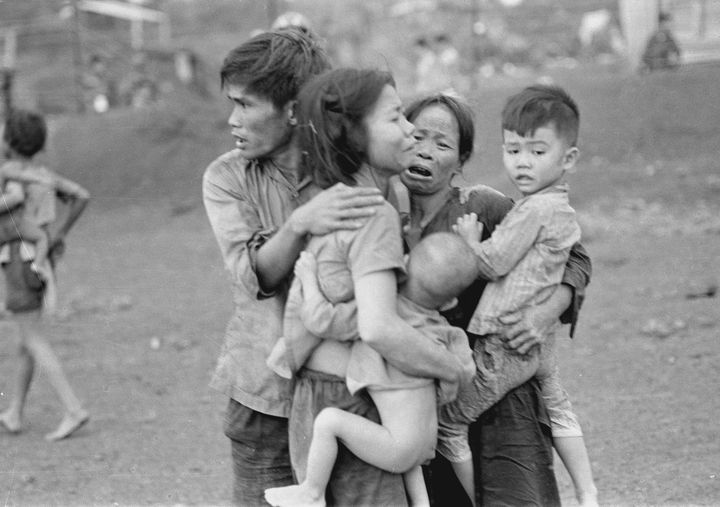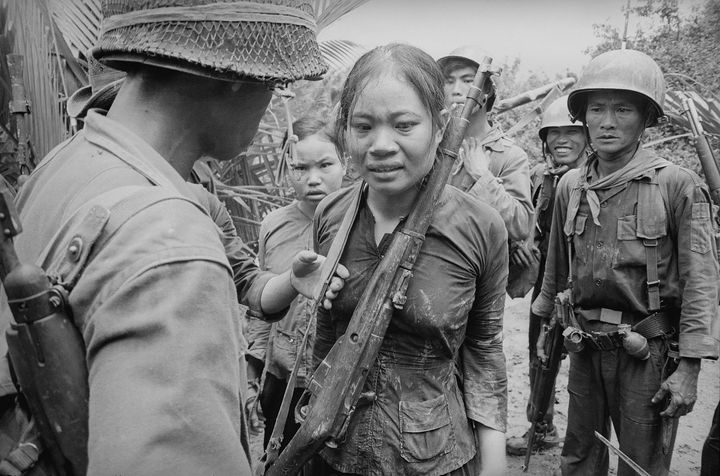Ken Burns’s and Lynn Novick’s The Vietnam War, a 10-part, 18-hour PBS epic, pokes a spot that’s still raw, tender and painful.
So let’s start with a dozen reasons it’s worth the time and potential discomfort to watch it anyway – not because it’s perfect, but because it’s the kind of history from which we need to learn. Even if real-life history says we almost never do.

The Vietnam War isn’t anti-war. There just isn’t any way around the fact that in retrospect, this war was a strategic disaster, initiated and perpetuated by tragic miscalculations and at times outright lies.
Nor did the miscalculators or the liars pay the price. Of course not. It was the pawns in this game, the soldiers and the farmers.
So here are a dozen valuable elements, reminders and lessons that make it worth taking that deep breath and tuning in, starting Sunday at 8 p.m. ET.
1. It was a civil war. For Americans, the war was about us: our troops, our geopolitical consequences. For the Vietnamese, America was a subplot. The main event was the in-country battle, the us against us. The long-term issue, and its most lethal component, was Vietnamese sorting it out for themselves.
2. Numbers don’t win wars. Secretary of Defense Robert MacNamara and General William Westmoreland thought that impressive numbers would ensure victory. MacNamara, an obsessive stats guy from his days at Ford, collected spread sheets on, say, the number of hamlets “secured,” as if that were a real thing. Westmoreland wanted enemy body counts that made it look like we were hours away from totally depopulating the North. Hollow delusion, all of it.
3. How early MacNamara realized it was over. As MacNamara later admitted, he was telling President Lyndon Johnson we were on a path to victory even after he realized there was no such path. MacNamara, one of “the brightest and the best,” didn’t want to be the guy saying what no one at the table wanted to hear.
4. Peter Coyote. Coyote narrates The Vietnam War, and he gets it just right. He narrated four previous Burns/Novick productions, and today’s fun fact is that he was a founder of the Diggers, a counterculture anarchist group active in San Francisco during the Vietnam years.
5. That’s a strategy, really? American troops would be ordered to storm and capture a hill. They did. Some died. The survivors would sit on the hill for an hour and leave.

6. The toll on civilians. Civilians were uprooted, threatened and sometimes killed by both sides, just because they were there. At some point you’d like to hear even more from villagers who had their lives turned inside out – sometimes by Americans, more often by Vietnamese. It’s that civil war thing again.
7. The North Vietnamese point of view. Burns and Novick interview North Vietnamese officials and soldiers, whose perspective enriches critical parts of the story. Like their American and South Vietnamese counterparts, these soldiers don’t talk a lot about the big picture. They talk about how they got into the war – drafted, in many cases – and how they survived when so many of their buddies didn’t.
8. Four presidents, one mantra. Dwight Eisenhower, John F. Kennedy, Lyndon Johnson and Richard Nixon all realized at some early point that Vietnam was not a smart place to get heavily involved. Politically, however, none wanted to risk being labeled the guy who let the commies win. So we supported bad leaders because they weren’t commies, and we kept plunging in deeper because no one could figure out how to leave without it looking like we lost. Which we ended up doing anyway.

9. Almost no war critics became war supporters. A whole lot of war supporters became critics. While that sounds anecdotal, it’s a hard fact to get around.
10. The North Vietnamese military made stupid decisions, too. Their command was sure the Tet offensive would inspire the people of South Vietnam to rise up and embrace the communists. In fact, the people of South Vietnam had little affection for either political side. Tet was a costly military defeat for Hanoi, though it served the larger purpose of accelerating American homefront fatigue.

11. Our last four years in Vietnam were a twilight zone. Despite renewed bombings, the Cambodian invasion, etc., Richard Nixon just wanted to get us out of a country in which we had completely lost interest. But he couldn’t let South Vietnam fall, which he knew it would do, before the 1972 election. So the troops stayed with little pretense of winning, which had the predictable impact on morale both there and here. Between 1969 and 1973, another 20,000 Americans died.
12 Kim Phuc’s back. Kim Phuc is the 9-year-old in the most famous picture from the war, running down a dirt road naked and crying after she and other civilians were strafed with napalm. The Vietnam War has video footage that shows Kim after she stopped running, with the burned skin peeling off her back in sheets. Flaming jellied gasoline will do that. So did this war.
#XơՑ���{3�o?�
